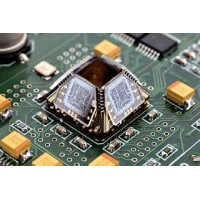
English > News
SSAU and Swiss Centre CSEM will be engaged in the creation of electronic components for the national space technology
20.10.2014, 10:34
In Samara State Aerospace University will establish development and manufacture of electronic and optoelectronic components for the space industry. Research on creation of the elements of flat imaging optics will become a pilot project.
SSAU held a meeting on the development of the centre of microelectronics for the aerospace industry. It was attended by the representatives of the University, the Ministry of Economic Development, Investments and Trade of Samara Region, Russian engineering company ELTEKH and the Swiss Centre for Electronics and Microtechnology CSEM1.
It is to be recalled that a cooperation agreement between SSAU and CSEM was signed in April 2014 in Switzerland. It involves creation of the Engineering Centre of Aerospace Microelectronics and Microsystem Technology in the Aerospace University. The specialised SSAU Centre will perform scientific research and create examples of modern electronics and microsystem technology for space projects. At the first stage the Swiss will help to organize the development of Russian high-tech products. After getting of samples ready for serial production it is planned to establish a joint Russian-Swiss enterprise.
“CSEM has the broadest competencies in the development of microsystem technology elements - said Andrey Prokofyev, SSAU Vice-Rector for Science and Innovation. - The Swiss are willing to share their experience with Russia. Now we have identified a pool of specific scientific fields in which we could get quick results together with the Swiss partners”.
Within the framework of the meeting in Samara, the parties agreed to start work on three scientific and research projects, on which SSAU already has its own exploratory work. It is the creation of elements representing flat imaging optics2, chromatographs and gas analysers3 having microsystem design, development of optical elements of infrared and terahertz ranges4 for process units and imaging systems.
Andre Perret, CSEM expert also proposed to form a joint application to obtain a grant for gas chromatography research. Representatives of the Swiss delegation also appreciated overall capacity of the existing SSAU research laboratories. After studying the work of the Interuniversity Department of Space Research, CSEM representatives offered to enhance interaction with the University and to consider joint projects on conduction experiments in space.
________________________________________
1Swiss Centre for Electronics and Microtechnology CSEM specializes in research and development in the field of micro-and nanotechnology, promoting innovative and knowledge-intensive products. The objectives of this multiindustry scientific and research organization include the expansion of cooperation between academic universities and final consumers in the industrial sector of economy.
2Flat imaging optics are unlike conventional lenses has no concave or convex surfaces, but focuses light beams similar to conventional bulk optical elements. SSAU scientists have extensive experience in the field of design and optimization of flat optics elements for different tasks. Many solutions have been found by SSAU scientists in this area are protected by international patents and published in the leading scientific journals.
3Chromatographs and gas analysers are the instruments for analysis of the qualitative composition of different substances. Now these are devices with sufficiently large dimensions. It is planned to create their miniature counterparts in SSAU laboratories.
4Optical elements of infrared and terahertz ranges are the optics for working with radiation, invisible to the human eye. Since most dielectric materials for such radiation are transparent, the devices operating in these ranges may be used to improve the efficiency of medical diagnosis, for detection of drugs and explosives and for other important areas.









